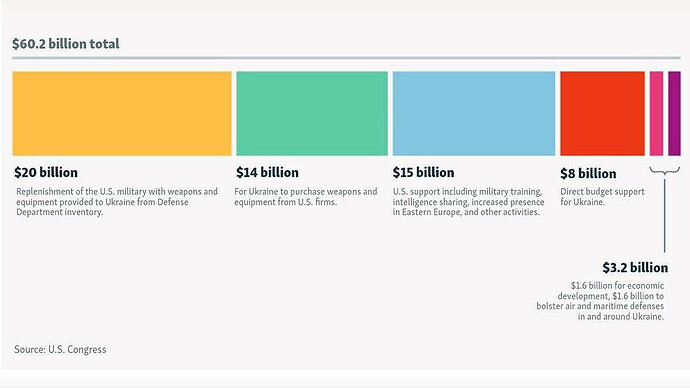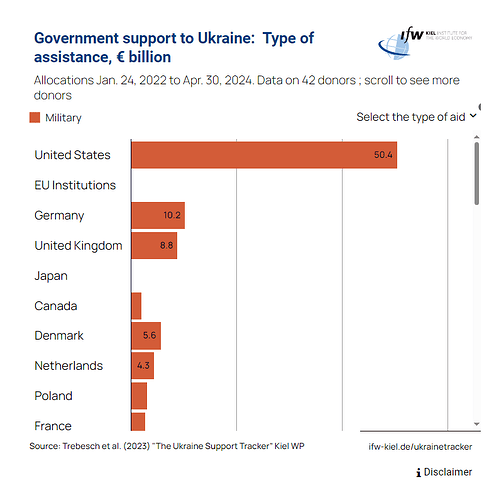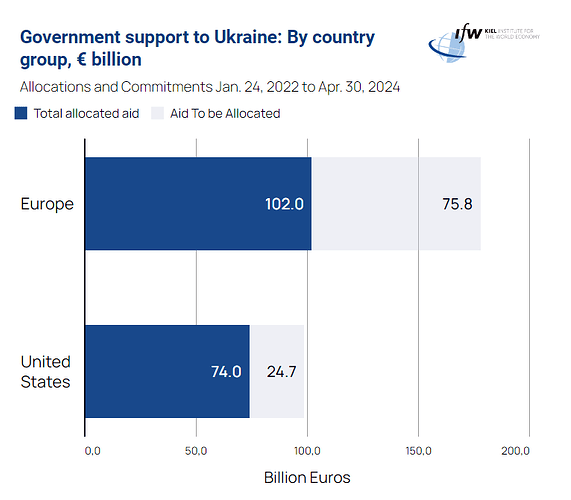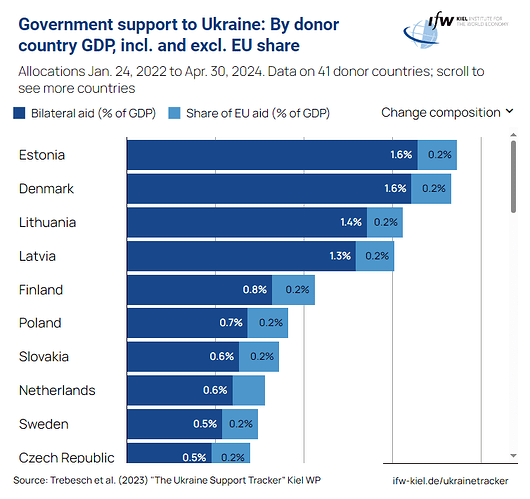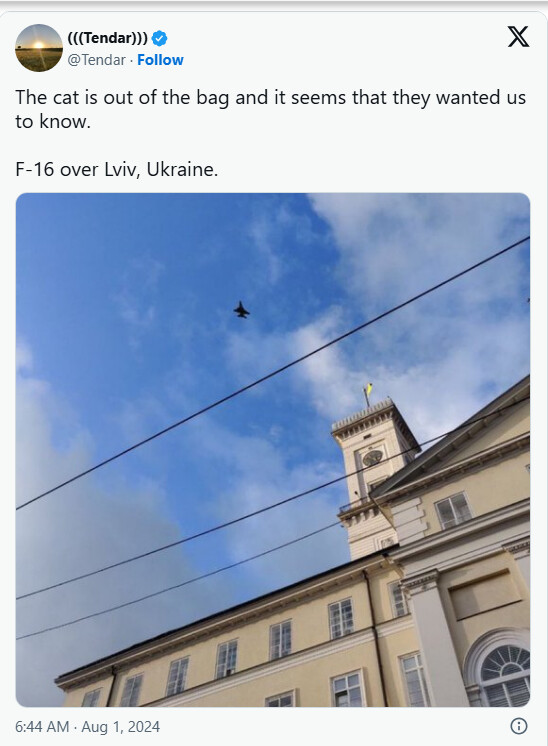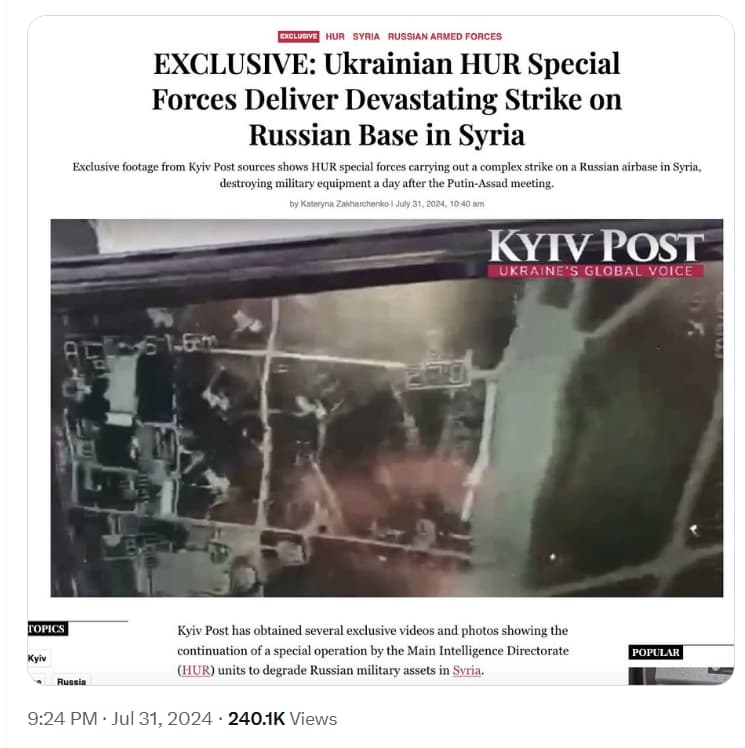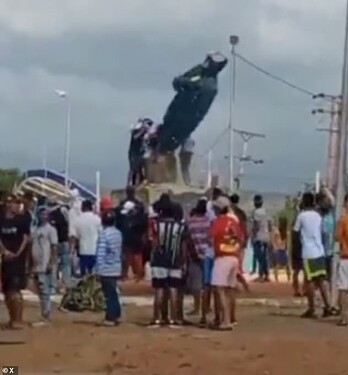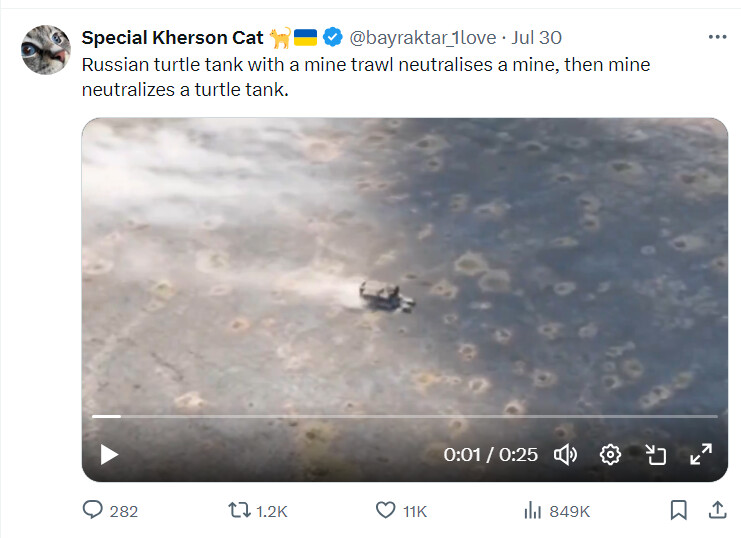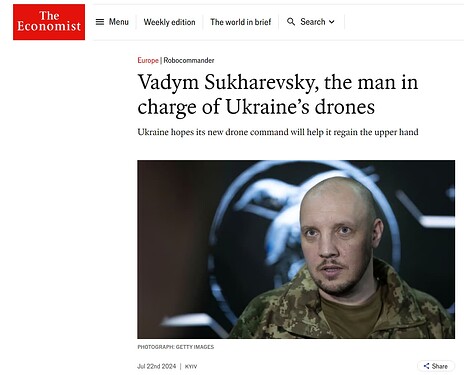Start of conflict draws from multiple funding sources, the recent package is only starting to get used. I think it’s trying to say how much has been sent, but using wording that isn’t clear.
Iran Front Page seem to be just pulling figures out of nowhere. The first amount is referring not to total aid but to military aid (‘Security assistance’) but this figure is contradicted by the Pentagon factsheet that they refer to themselves in their own article (!?) :
Fact Sheet on U.S. Security Assistance to Ukraine - April 24 2024 (defense.gov)
Supposed breakdown of $60.2 Billion package
Aid figures according to the go-to source for Ukraine Aid:
U.S. to arm Ukraine’s F-16s with advanced weapons
The U.S. has agreed to arm dozens of F-16 fighter jets being sent to Ukraine with American-made missiles.
The Wall Street Journal reported on this.
The United States will provide the F-16 with armament including AGM-88 HARM anti-radiation missiles, long-range JDAMs that turn unguided bombs into smart weapons, and GBU bombs.
The United States will supply the fighter jets with advanced medium-range air-to-air missiles, known as AMRAAM, and short-range air-to-air missiles, known as AIM-9X.
The sources of The Wall Street Journal refused to name specific dates for the transfer of F-16s and their weapons to Ukraine for security reasons.
According to a senior U.S. official, although the Pentagon has limited stockpiles and production capabilities, it will supply precision-guided missiles and advanced missiles to the F-16 in sufficient quantities to meet Ukraine’s most urgent needs.
“We are confident that we will be able to supply all of those [weapons], at least the critical volumes that they need,” the U.S. official said.
On July 10, the leaders of the United States, Denmark, and the Netherlands, Joe Biden, Mette Frederiksen, and ■■■■ Schoof, who head the so-called Fighter Coalition, confirmed that Ukraine will receive its first F-16s during the summer.
According to Bloomberg, Ukraine expects to receive six F-16s from its Western partners this summer and up to 20 fighter jets in total by the end of the year.
The Ukrainian Air Force is already using AGM-88 HARM missiles, JDAM bombs, and GBU bombs.
The Ukrainian Air Force adapted Soviet-era combat aircraft to use American GBU-39 bombs.
AMRAAM and AIM-9 missiles are used in Ukraine’s ground-based air defense systems.
https://mil.in.ua/en/news/u-s-to-arm-ukraine-s-f-16s-with-advanced-weapons/
https://mil.in.ua/en/news/germany-plans-to-purchase-norwegian-nomad-air-defense-systems-for-ukraine/
Germany Plans to Purchase Norwegian NOMAD Air Defense Systems for Ukraine
The German government is considering purchasing the Norwegian NOMADS air defense system for the needs of the Ukrainian Defense Forces.
Hartpunkt reported on this.
Currently, the German Federal Government is considering the possibility of purchasing the systems to transfer them to Ukraine.
In addition, Germany will be able to provide Ukraine with IRIS-T missiles, which, together with the U.S. AIM-9X, can be used by the system.
Since production of the new Norwegian SAM is just beginning, Germany may also attract its own companies to invest in expanding production.
In June 2024, the Norwegian company Kongsberg announced the start of mass production of the new NOMADS air defense system.
Due to its compact module, the system, in addition to the launcher, is also equipped with the Active Phased Array Radar (APAR), which is used to detect air targets and track them.
An X-band radar of the XENTA-M family, manufactured by the Danish company Weibel Scientific, was integrated into the system. However, the specific model of the radar is unknown, but if the most powerful M5 version is chosen, its range of detection of air targets can reach 75 km.
The first systems are scheduled to enter service with the Norwegian army in 2026, with the delivery of the six batteries expected to be completed by 2028.
According to the developer, the system is perfect for destroying small air targets, including UAVs, quadcopters, and cruise missiles. The system is based on the IRIS-T missile, which is capable of hitting air targets at a distance of up to 12 km and at an altitude of up to 8 km.
Militarnyi previously reported that the Norwegian company Kongsberg is working on modernizing the NASAMS anti-aircraft system to intercept ballistic missiles.
The reports suggest that this modernization effort aims to equip the NASAMS system with the ability to intercept ballistic targets. This could potentially address a need for long-range missile defense systems in Norway, where such systems are currently lacking.
New Russian LR drone.
It seems to me that in the ongoing drone wars, that is the race to develop new models, UA is a still a decent sized step ahead of RU. This new RU drone is as basic as it gets, the result of a lack of resources but also lowering the cost of each unit. It won’t surprise me if drones end up being packaged as kits that individual soldiers can put together near the front line. More things are becoming possible.
A Two-Pound Ukrainian Drone Just Shot Down A 12-Ton Russian Helicopter
It may be the first time a drone has destroyed a helicopter in mid-air.
Ukrainian forces deploy more than 100,000 explosive first-person-view drones a month all along the 700-mile front line of Russia’s 28-month wider war on Ukraine. The drones smash into armored vehicles, chase down exposed infantry and follow artillery fire back to its origin in order to target Russian howitzers.
And today one of the small quadcopter drones—remotely steered by an operator wearing a virtual-reality headset—shot down a Russian helicopter, apparently for the first time.
Photos and videos that circulated on social media depict the Mil Mi-8 transport helicopter burning near Donetsk in Russian-occupied eastern Ukraine. “A speedy recovery to the survivors,” one Russian blogger wrote.
This new use of explosive drones has been a long time coming. As long ago as September, Ukrainian operators first tried ramming their flying robots into Russian helicopters mid-flight. The drone threat got so serious that the Russian air force began assigning some helicopters to escort other helicopters.
It apparently took at least 10 months of trying before a Ukrainian drone operator finally hit a Russian helicopter. The months of misses are understandable. A helicopter can fly faster than 150 miles per hour at altitudes exceeding thousands of feet—too fast and too high for a two-pound drone to get a clean shot without an enormous degree of skill or luck on the part of the operator.
The Ukrainian drone pilot in the Wednesday shoot-down was very skilled or lucky—or both. They spotted the 12-ton, three-crew Russian helicopter—which performs attack, transport and medical-evacuation missions—while it was still close to the ground. “Caught at the moment of takeoff,” a Russian blogger reported.
An FPV drone normally carries just a few pounds of explosives. But it doesn’t take much firepower to knock down a helicopter if it takes a hit it in the rotors.
After more than two years of war, Ukrainian drone operators have become extremely adept at targeting the most vulnerable parts of Russian targets: flying drones into the open hatches of armored personnel carriers, under the add-on armor on so-called “turtle tanks” and through the doors of reinforced infantry dugouts.
Compared to a 36-inch-wide hatch, an Mi-8’s 12-foot-diameter rotor disc is an easy target.
What might be most impressive is how far the Russian helicopter may have been from the front line. The western edge of Donetsk is just three miles from the front line—well within the range of an unaided FPV drone.
But the eastern edge of the city is closer to 10 miles from the front line. That’s apparently where the shoot-down took place. “The distance,” the second blogger explained, “is very significant.”
To travel 10 miles, an FPV might need help from a second drone, trailing a few miles behind, that captures and rebroadcasts its short-range command signal. It’s a complex operation requiring careful coordination.
The Russian military has hundreds of helicopters and, so far, has lost just a hundred or so to Ukrainian action. One more loss isn’t catastrophic for the Russians. But now that the Ukrainians have droned their first helicopter, they may redouble their efforts to take down Russian rotorcraft.
Considering how many FPV drones the Ukrainians deploy every month, the threat to Russian helicopters could intensify—a lot.
I understand attacking the Russians in Syria might be satisfying, but does it really much help Ukraine? Further destabilising the Middle East is not something I would want on my CV.
Attriting russian military resources, state or private, inside or outside Ukraine, I think is a net positive for Ukraine.
The russians have been a stabilising force for peace in Africa and the ME?
US economic sanctions on Venezuela badly affected the civilian population. They were on a promise that the sanctions would be lifted with a change of government.
If only the US could achieve such an outcome through its sanctions on Russia……
Still a spectacular result, whatever the sequence.


